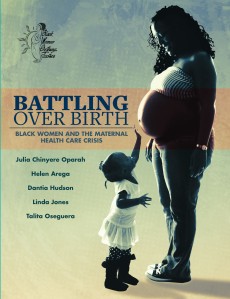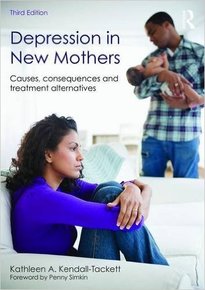Excerpt from Smith, P.H., Labbok, M., & Chambers, B. (Eds.) (2017). Breastfeeding, Social Justice, and Equity. Amarillo, TX: Praeclarus Press.
Maternal and infant outcomes
 Disparities in maternal and infant outcomes remain a prevalent and significant issue in the United States. The U.S. is one of only 17 countries worldwide, and the only high-income country, where the rate of maternal mortality is increasing. Between 1990 and 2013, the maternal mortality ratio in the U.S. increased from 12 to 28 maternal deaths for every 100,000 live births (World Health Organization [WHO], 2014). In addition, severe maternal morbidity currently affects more than 50,000 women in the U.S. every year, with the rate of hospitalizations due to severe delivery complications more than doubling between 1998 and 2010 (Centers for Disease Control and Prevention [CDC], 2014a). Disparities in these rates of maternal mortality and morbidity are particularly evident, with Black women being three-to-four times more likely to die from pregnancy-related causes than White women (Tucker, Berg, Callaghan, & Hsia, 2007). Black women are also two times more likely to suffer from severe maternal morbidity than their White counterparts (Creanga, Bateman, Kuklina, & Callaghan, 2014).
Disparities in maternal and infant outcomes remain a prevalent and significant issue in the United States. The U.S. is one of only 17 countries worldwide, and the only high-income country, where the rate of maternal mortality is increasing. Between 1990 and 2013, the maternal mortality ratio in the U.S. increased from 12 to 28 maternal deaths for every 100,000 live births (World Health Organization [WHO], 2014). In addition, severe maternal morbidity currently affects more than 50,000 women in the U.S. every year, with the rate of hospitalizations due to severe delivery complications more than doubling between 1998 and 2010 (Centers for Disease Control and Prevention [CDC], 2014a). Disparities in these rates of maternal mortality and morbidity are particularly evident, with Black women being three-to-four times more likely to die from pregnancy-related causes than White women (Tucker, Berg, Callaghan, & Hsia, 2007). Black women are also two times more likely to suffer from severe maternal morbidity than their White counterparts (Creanga, Bateman, Kuklina, & Callaghan, 2014).
In terms of infant outcomes, rates of preterm birth, low birth weight, and infant mortality continue to be significantly greater for Blacks than they are for Whites. In 2013, the overall preterm birth rate was 11.4%; however, 16.3% of Black infants were born preterm, compared to just 10.2% of White infants (Martin, Hamilton, Osterman, Curtin, & Mathews, 2015). Even after accounting for known risk factors (e.g., income, education, chronic conditions, risky health behaviors), this disparity in preterm birth persists (Lu & Halfon, 2003). Similarly, the rate of low birth weight in 2013 was 8.0%; though, the rate for Black infants (13.1%) was nearly twice that of White infants (7.0%) (Martin et al., 2015).
In addition to these adverse birth outcomes for Black Americans, disparities in infant feeding practices also exist, and have persisted over time. Among all infants born in 2000, 70.3% had ever breastfed, 34.5% breastfed for 6 months, and 16.0% breastfed for 12 months. Among infants born in 2008, these percentages increased to 74.6%, 44.4%, and 23.4%, respectively (CDC, 2013). Among Black women, the prevalence of breastfeeding initiation in 2000 was 47.4%, increasing to 58.9% by 2008. Comparatively, the prevalence of breastfeeding initiation among White women increased from 71.8% to 75.2% in this timeframe. From 2000 to 2008, breastfeeding at 6 and 12 months increased significantly among both populations (CDC, 2013). Data from the 2011 National Immunization Survey (NIS) indicate that rates of breastfeeding initiation have continued to increase, with 61.6% of Black and 81.1% of White women initiating breastfeeding practices (CDC, 2014b). Still, while the gap between Black and White breastfeeding initiation has narrowed, Black infants maintain the lowest prevalence of breastfeeding initiation and duration (CDC, 2014b).
Life Course Theory

The causes of the racial disparities in birth outcomes and breastfeeding practices are still not fully understood. However, since Lu and Halfon (2003) developed the life course perspective in 2003, maternal and child health professionals have expanded their views of health determination (Lu & Halfon, 2003). Life Course Theory is a conceptual framework that aims to provide an explanation for health, disease, and disparity patterns among differing populations and over time (Fine & Kotelchuck, 2010). The perspective synthesizes two longitudinal models—an early programming model and a cumulative pathways model—ultimately pointing to broad social, economic, and environmental factors as underlying causes of persistent inequalities in health for a wide range of diseases and conditions across population groups (Fine & Kotelchuck, 2010; Lu et al., 2010). The theory ultimately conceptualizes birth outcomes as the product of a lifetime of exposures, and the early programming model, in particular, provides a rationale for supporting breastfeeding practices.
The early programming component of the life course perspective posits that early life exposures influence future health outcomes. Breastfeeding, therefore, provides a number of benefits for infants and children, including nutritionally balanced meals, protection against common childhood illnesses and infections, better survival during the first year of life, and a lower chance of developing certain allergies or Type 1 diabetes (American Academy of Pediatrics [AAP], 2012; National Institute of Child Health & Human Development [NICHD], 2009). There are also demonstrated physical and emotional benefits of breastfeeding from infants’ skin-to-skin contact with their mother (UNICEF, n.d). In addition to these proximal benefits, indirect evidence also suggests that overweight and obesity occur less often among children who were breastfed (Yamakawa, Yorifuji, Inoue, Kato, & Doi, 2013). Research has also shown a connection between breastfeeding and better cognitive development in children through school age (Quigley et al., 2012).
Though the benefits of breastfeeding are often focused on the infant, there are known benefits for mothers as well. Short term, mothers experience less blood loss following childbirth and improved healing; improved postpartum weight loss; emotional benefits from close interaction with their infant; lower likelihood of experiencing postpartum depression; and the same physical and emotional benefits associated with skin-to-skin contact with their infants. In a more long-term sense, breastfeeding mothers have a lesser chance of developing certain health conditions, including rheumatoid arthritis, cardiovascular disease, and certain cancers (AAP, 2012; NICHD, 2009; UNICEF, n.d.).
In 2010, Lu et al. used the aforementioned life course approach to propose a 12-point plan to reduce the Black-White disparities in birth outcomes (Lu et al., 2010). Recognizing that early life disadvantages and cumulative allostatic load over the life course are significant factors to be addressed, North Carolina adapted this original plan to specifically improve the health of mothers, children, and communities within the state.
North Carolina Perinatal Health Strategic Plan
The 12 points suggested by Lu et al., and which form the framework of North Carolina’s plan are summarized in Table 1. The North Carolina plan is comprehensive, and will be described elsewhere upon final publication by the NC Division of Public Health. Certainly, the accumulation of these points suggests a multifaceted approach to addressing disparities in birth outcomes; however, a specific focus on breastfeeding practices and promotion is woven throughout. Many aspects of the plan respond to needs that are universal to all mothers, such as the creation of breastfeeding-friendly policies and designations, and promoting the role of fathers in changing culture. Recognizing that eliminating disparities in breastfeeding will also require targeted actions, the plan includes a number of strategies that address concerns specific to, or disproportionately experienced by, minority women.
Providing culturally competent care is a crucial component in addressing disparities. While the U.S. population is 63.4% White and 12.3% Black, 87% of International Board Certified Lactation Consultants (IBCLCs) are White, and just 1.6% are Black (Mojab, 2015). The disproportionately small number of minority IBCLCs reflects the barriers in access to the specialized education, financial investment, and contact hours required for certification. The North Carolina plan includes increased access to the numbers of IBCLCs per live birth, especially those of color, and calls for increased educational and financial support for these professionals. Others who work with breastfeeding mothers, such as home visitors, can benefit from training to focus on community building and empowering families. Listening sessions with women, families, and communities will enhance the systems that support breastfeeding and speak directly to the needs voiced by the populations served. Enhancing home visiting and other health care services, along with diversifying the breastfeeding support workforce, will be powerful tools in providing culturally competent care.
Table 1
A 12-point plan to close the Black-White gap in birth outcomes
(Lu et al., 2010)
Goal 1: Improving health care for women
- Point 1. Provide interconception care to women with prior adverse pregnancy outcomes
- Point 2. Increase access to preconception health and health care to women and men
- Point 3. Improve the quality of maternal care
- Point 4. Expand health care access over the life course for women and men
Goal 2: Strengthening families and communities
- Point 5. Strengthen father involvement in families
- Point 6. Enhance coordination and integration of family support services
- Point 7. Create reproductive social capital in all communities
- Point 8. Invest in community building
Goal 3: Addressing social and economic inequities
- Point 9. Close the education gap
- Point 10. Reduce poverty among families
- Point 11. Support working mothers and families
- Point 12. Undo racism
The plan includes expansion of the breastfeeding peer support program to all counties in North Carolina. Peer support is an acknowledged strategy for increased breastfeeding initiation and duration, and can be an important component in reducing disparities (Johnson, Kirk, Rosenblum, & Muzik, 2015). Peer counseling also increases partner support for breastfeeding and strengthens the father’s role in the family (Johnson et al., 2015).
Support for working families is another critical component in reducing racial disparities in breastfeeding. Black mothers working outside the home are disproportionately affected by barriers to breastfeeding and milk expression, such as short maternity leaves and inflexible work conditions (Johnson et al., 2015). Expanding paid leave, making high-quality childcare more accessible, and improving business support for breastfeeding will be of particular benefit to Black mothers.
While we celebrate the progress that has been made in increasing breastfeeding rates among mothers, multiple, coordinated efforts are needed to accelerate the pace of this change, especially for Black mothers. To close the gaps in birth and breastfeeding outcomes, statewide initiatives must reach women throughout their reproductive lives. Addressing disparities in breastfeeding from a life course perspective provides insight into the generational effects of these inequities, and highlights opportunities to redress them at the policy, community, and individual levels.
Elizabeth Thomas worked with breastfeeding mothers for eight years as a La Leche League Leader and International Board Certified Lactation Consultant, and was a finalist for “Best Lactation Consultant” in the 2012 Austin Birth Awards. She has also advocated for childbearing women as a board member of Texans for Midwifery and as a birth doula. Elizabeth is currently a Master’s student in the Department of Maternal and Child Health at the Gillings School of Public Health at UNC.
Sarah Verbiest, DrPH, MSW, MPH, is a Clinical Associate Professor at the School of Social Work and the Executive Director of the Center for Maternal and Infant Health at the University of North Carolina at Chapel Hill. She is the CDC Senior Consultant for the National Preconception Health and Health Care Initiative, and the cofounder of the Every Woman Southeast Coalition, a regional preconception health initiative. Dr. Verbiest coordinates the NC Recurring Preterm Birth Prevention Program, a statewide smoking cessation program for pregnant and new mothers, and several projects serving high-risk pregnant women, new mothers and their infants. She serves on the Governor’s NC Child Fatality Task Force, chairs the NC Perinatal Health Committee, and serves on AMCHP’s Best Practice Review Committee. She earned her graduate degrees at UNC-CH, including a Master’s in Social Work, Master’s in Public Health in Maternal and Child, and a Doctorate in Public Health Leadership from the Department of Health Policy and Management. She is the mother of two teenagers, and is active in her faith community.
Amanda Zabala obtained her Masters of Public Health degree in Maternal and Child Health at the University of North Carolina at Chapel Hill, where her research focused on preconception, pregnancy, postpartum, and women’s health. She also received a Certificate in Interdisciplinary Health Disparities, and provides consultative support to the North Carolina Office of Minority Health and Health Disparities, and the University of North Carolina’s Center for Maternal and Infant Health on issues related to maternal, child, and minority health. She currently serves as a CDC/CSTE Applied Epidemiology Fellow at the Ohio Department of Health, where she promotes injury prevention strategies for recreational waters, and analyzes the impact of waterborne diseases on women and children’s health.






















Leave a comment